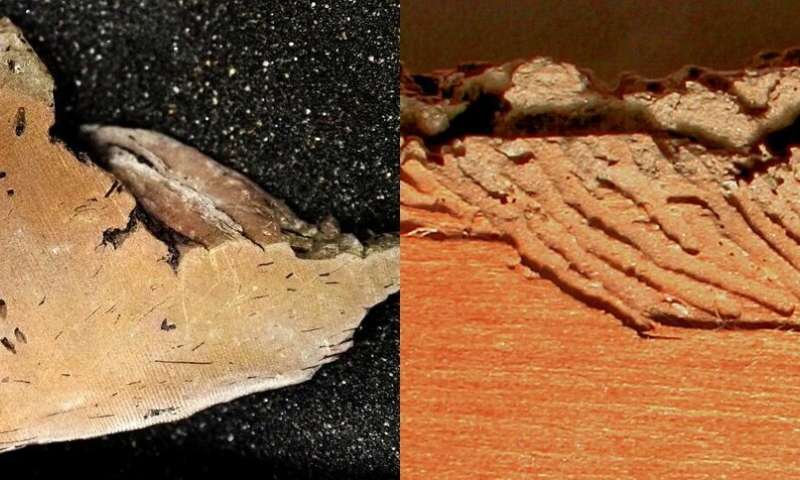#Graduate student names new trace fossil discovered during coursework
“#Graduate student names new trace fossil discovered during coursework”

University of Alberta graduate student Scott Melnyk made an intriguing fossil find during a graduate level course—and ended up identifying the fossilized tracks of a newly discovered wood-boring organism in a new study.
“Apectoichnus lignummasticans is unique in that it is only the third wood-boring trace fossil associated with marine environments,” explained Melnyk, graduate student with the Department of Earth and Atmospheric Sciences and member of the Ichnology Research Group.
Trace fossils, which include tracks, burrows, and tunnels, are the fossilized evidence of the activities of past life, explained Melnyk, who conducted the research under the supervision of Professor Murray Gingras in Earth and Atmospheric Sciences.
“Trace fossils are very useful to interpret environmental characteristics of Earth millions of years ago,” said Melnyk. “The marine origin of these fossils, for example, provides evidence that the shallow sea that covered much of Western Canada—the Cretaceous Interior Seaway—extended into west-central Saskatchewan roughly 100 million years ago.”
Melnyk came across the fossil during a graduate-level sedimentology course in one of the cores of the University of Alberta’s Drill Core Collection. The collection was donated by Shell Canada and contains more than 6,000 meters of drill cores that the Department of Earth and Atmospheric Sciences uses for teaching and research.
“The following year I became a teaching assistant for the course, and brought the fossil to the attention of my advisor, Murray Gingras,” said Melnyk. “From there we set out to study whether or not the trace fossils were in fact unique and determine their geological significance.”
And while the fossils are significant for their geological rarity, they’re also a cause to celebrate the research of graduate students.
“This is only the second time in 20 years that a University of Alberta graduate student has named a new trace fossil,” said Gingras. “The fossils are similar in many respects to modern borings in wood by marine isopods—this was a remarkable find and a testament to the importance of our students’ work.”
More information:
Scott Melnyk et al, A new marine woodground ichnotaxon from the Lower Cretaceous Mannville Group, Saskatchewan, Canada, Journal of Paleontology (2020). DOI: 10.1017/jpa.2020.63
Graduate student names new trace fossil discovered during coursework (2020, September 2)
retrieved 2 September 2020
from https://phys.org/news/2020-09-student-fossil-coursework.html
This document is subject to copyright. Apart from any fair dealing for the purpose of private study or research, no
part may be reproduced without the written permission. The content is provided for information purposes only.
If you want to read more Like this articles, you can visit our Science category.
if you want to watch Movies or Tv Shows go to Dizi.BuradaBiliyorum.Com for forums sites go to Forum.BuradaBiliyorum.Com


